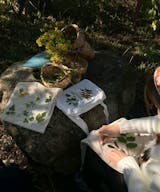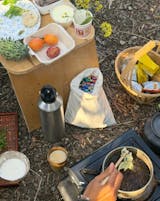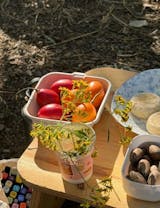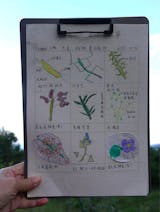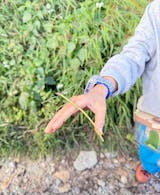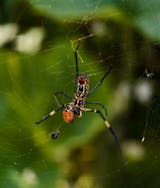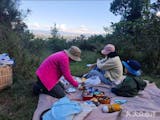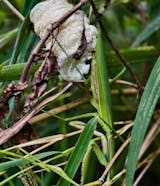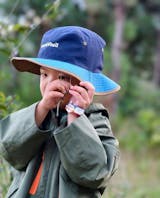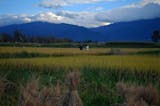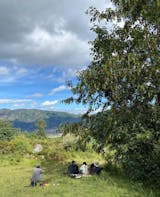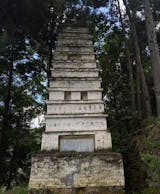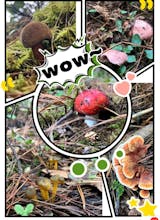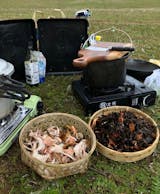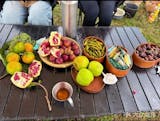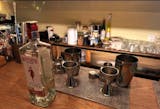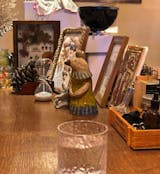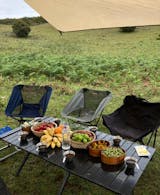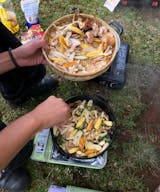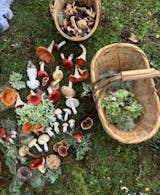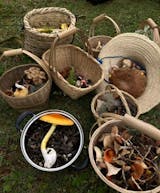
Qiqi | Songhe Village in Dali, at the foot of the snow-capped mountains, deep in the mountains, a thousand-acre ancient plum garden
The hiking in Songhe Meihua Village is held every February.

Songhe Village is under the jurisdiction of Cibihu Town, Eryuan County, Dali City. It is located to the west of Cibihu Town, bordered by the forests of Yuhe, Qingchang and Edun in Cibihu Town to the east, Zhuangshang Village in Fengyu Town to the south, the foot of Luoping Mountain to the west, and the forest land of Guosheng Village in this town to the north. It has three villager groups under its jurisdiction, namely Dasongdian, Xideng and Gujizhaobi.
It is about 70 kilometers from Dali Ancient Town to Songhe Village. The journey is not far, but it takes a little time because of the mountain roads, about less than two hours' drive.
It is only 8 kilometers from the foot of the mountain to the village at the top of the mountain, but the mountain road is full of steep bends and sharp turns. If you are not very confident about mountain roads, you still need to pay attention to driving safety.
Songhe Village is most famous for its green plums . I went there many times in previous years to see the plums, from fruiting to harvesting. This year, I finally went there during the flowering season. I saw the green plum trees in bloom, and the scenery was magnificent. From the foot of the mountain to the top of the mountain in the distance, the green plum trees were in full bloom. The top of Luoping Mountain in the distance was covered with white snow, and the green plum flowers at the foot of the mountain seemed to be covered by clouds.

Popular science:
The plum blossoms in Songhe Village are the flowers of green plum trees. They only bloom in late January every year, and the peak flowering period is in early February. The flowering period is about 20 days . The later the day, the fewer green plum flowers there are. There are more than 10 varieties of plums in Songhe Village, among which salt plums, bitter plums, and water plums are the most common. Although these plum trees have differences in blooming, their overall color is lighter than the ornamental red plums we see every day, and there are few deep pinks. Although they are not as colorful, the flowers are more luxuriant than the ornamental plums, and the flowers are full like popcorn.
There are more than ten thousand mu of plum trees in the whole Songhe Village, stretching from the foot of the mountain to the top. Whether it is the roadside by the fields or the gullies on the hillsides, they are all covered with plum trees. A single plum tree can produce a thousand kilograms of fruit. There are tens of thousands of mu of continuous plum gardens, and there is also an ancient tree called "Plum King" which is 886 years old. It is a spectacular sight.
Green plum: belongs to the order Rosales, and is the fruit of the fruit plum tree. Fruit plum is a plant of the genus Armeniaca mume Sieb. in the family Rosaceae. It is also called plum and sour plum. It is native to China and is a subtropical specialty fruit tree.
Plum blossom: A deciduous tree of the genus Prunus in the Rosaceae family, sometimes also referred to as its fruit (plum) or flower (plum blossom), with the scientific name Prunus mume. Plum blossoms usually bloom in winter and spring, and are listed as one of the Four Gentlemen along with orchids, bamboos, and chrysanthemums, and are also known as the Three Friends of Winter along with pine trees and bamboos.

In the past two years, I have visited Songhe Village several times, all for the plums in the village. When I went there the first time, the plum trees had already bloomed, and the trees were full of small, fuzzy plums. When I went there again later, it was the season when the plums were ripe, and the whole village was filled with the fragrance of plums.
Songhe Village is 2,500 meters above sea level. Due to the variety, altitude and growing environment, the green plums here are often small in size and mature much later than ordinary green plums. The slopes are not accessible by car, so all plums must be transported from the plum trees to the market by people and mules. The square next to the village committee of Songhe Village, next to the village primary and secondary school, becomes a plum trading market in July. Every household has a mule, and the heavy plums are the biggest harvest of the year.

The plum trees in Songhe Village are full in April
This time, we went to Songhe Village on the Plum Blossom Forest Tour organized by Cangshan Hiking Home . The leader was Xiao Li from Dali. His home is in Eryuan, not far from Songhe Village, so he is more familiar with it than us. Although I am not unfamiliar with Songhe Village, I still saw and felt many different things from Xiao Li's local perspective.
The Songhe Village light hiking route he made is really relaxing, just like a mountain walk with friends, except that the walking scene is moved to the plum forest in the mountains. After returning home, I looked through more than 200 photos and couldn't wait to share them with you, and I also want to convey to everyone: travel is life .



This time, we went to Songhe Village on the Plum Blossom Forest Tour organized by Cangshan Hiking Home . The leader was Xiao Li from Dali. His home is in Eryuan, not far from Songhe Village, so he is more familiar with it than us. Although I am not unfamiliar with Songhe Village, I still saw and felt many different things from Xiao Li's local perspective.
The Songhe Village light hiking route he made is really relaxing, just like a mountain walk with friends, except that the walking scene is moved to the plum forest in the mountains. After returning home, I looked through more than 200 photos and couldn't wait to share them with you, and I also want to convey to everyone: travel is life .

Arriving at Songhe Village, the village stage was in full swing. There are opera performances from the first to the tenth day of the lunar year. Most of the audience were elders. The men wore sheepskin vests, while the women wore sheepskin draped over their backs. Different from the "starry night and moon" pattern of the Naxi people in Lijiang, the embroidery and color matching on the two straps of the drapes were typical Bai patterns.
Songhe Village is an administrative village in the mountainous area of Eryuan County where the Yi ethnic group lives. It has 798 households, the vast majority of whom are Yi, with only a few from other ethnic groups who have migrated in through marriage.
Although it is a Yi village, due to long-term coexistence with the Bai and Han people, the Yi people have retained the traditional Yi culture and absorbed the culture of the Bai and Han people. Therefore, the clothing can be seen as Bai clothing and Yi sheepskin clothing. As for headwear, it has long been updated to hats for daily use and convenience.
Before leaving in the afternoon, I chatted with the elderly ladies who had just finished watching the show. The elderly lady also said: We are "Bai Yi", which means that the Bai and Yi ethnic groups are one family.

The New Year opera performance in Songhe Village also has a story. It is not a professional opera troupe, but people in the village who are 43 years old or older come together to perform for the elders. In Songhe Village, people call people of the same age who were born in the same year "Dalaogeng", and this custom has continued for 25 years.
There are operas during the day and dances at night. In addition to the performers, other people in the village will go to the stage to hang some merits. The money is used to cover daily expenses. Because the opera time spans the lunch time, lunch will also be prepared for the elders.
You should know that almost all the adult men in Songhe Village can play the suona. In addition to their own ethnic language, they are also proficient in the Bai language, and master the Bai sanxian, suona, Bai tunes, "chuichui tunes" and other Bai arts. It is a well-known "hometown of suona".


villagers' merit list and Da Laogeng exclusive merit

After watching the opera, I followed Xiao Li to go hiking. The distance was not far, only about 2 kilometers one way. We drove to the viewing platform first, passed through the plum forest of ten thousand mu, and started the second journey of the day on a narrow dirt road. Eryuan in mid-February was as warm as spring, and the white snow on the top of Luoping Mountain in the distance could not block the warmth of the sun that covered my body. In the plum forest of ten thousand mu, there was nothing else except the wind, trees, flowers, birds, bees and us.
After walking a few steps, Xiao Li said: Do you hear the sound of bees?

Team leader Xiao Li
The journey was not difficult at all, with only a short uphill section. Because there was no car access, the pine needles on the road were thick, and when you stepped on them, you could feel the "softness" of the earth.
Most of the plum orchards in Songhe Village are contracted by villagers, and there is also a contract base for Erbao Company, the largest plum processing factory in Eryuan. Some plum orchards seen along the way have the simplest gates, which are not actually for blocking people, but more importantly for preventing sheep from coming out of the plum orchard. Sheep are the largest "fertilizer producers" in plum orchards, and intercropping is often done on the ground in plum orchards, sometimes with some wild peas, which are provided as feed for the sheep. Some also grow the Chinese medicinal herb "Dian Paris polyphylla" to increase economic income.
After a long journey under the scorching sun, Xiao Li took us to rest under a big tree. He took out citrons and purple radishes from his backpack, which were special "fruits" in season. There were also some cakes, tea, and plum juice for everyone to replenish their energy. I mixed some plum juice with tea, which was refreshing and thirst-quenching. On a nearby dwarf tree, we also found an abandoned bird's nest.

The nearly 4-kilometer round-trip hike was indeed easy. We finished the walk while chatting. We thought the trip was over, but Xiao Li said he would take us to a plum garden where they raised bees.
When we arrived, we found that it was a small house that we saw from the observation deck. The plum garden is not big, and the house is not big either. There are 20 to 30 small earthen houses under the plum trees. The sunlight shines on the houses made of rammed earth, which is very beautiful. Busy bees gather somewhere, and there are countless bees running around in the whole plum garden.
Ten thousand mu of ancient plum gardens, countless pear trees, as well as the terrain at an altitude of 2,500 meters and unique climatic conditions have brought a rare wild plum blossom honey to Songhe Village.
Bees have always had two important functions in agricultural ecology: maintaining ecological balance and ensuring human food security. The 10,000-acre plum garden in Songhe Village cannot do without bees for pollination. Bees have always been there since the beginning of green plum trees.
The special honey source makes the honey of Songhe Village unique. Xiao Li said: If the guests who come here can directly taste the freshest honey, then they don’t have to go through so much trouble to sell it in the market.

The round-trip hike of nearly 4 kilometers was indeed relaxing, and we completed it while chatting. I thought the journey would end here, but Xiao Li said he would take us to a plum garden where they also raise bees.
Upon arrival, I discovered a small house seen from a lookout point, nestled amidst a modest plum orchard. The orchard was not large, and neither was the house. Inside, there were about twenty to thirty small earthen houses nestled low among the plum trees . Sunlight spilled over the houses made of rammed earth, creating a picturesque scene. Busy bees congregated somewhere nearby, with countless bees buzzing busily throughout the entire orchard.
In the village of Songhe, amidst tens of thousands of ancient plum trees, numerous pear trees, and an elevation of 2500 meters coupled with unique climatic conditions, a rare wild plum blossom honey is produced.
Bees play two crucial roles in agricultural ecology: maintaining ecological balance and ensuring human food security. The vast plum orchards of Songhe Village depend on bees for pollination; bees have been present since the establishment of green plum trees.
The special honey source distinguishes Songhe Village's honey. Xiao Li said, "If guests here could directly taste the freshest honey, we wouldn't have to go through the trouble of selling it in the market."

There are many such plum gardens in Songhe Village, where plum trees are planted and bees are raised. Bees have special hives, and the houses where people live are also hives. The walls are made of hives and then built, and honey can also be collected from inside the house. It is warm, but after the sun goes down, the temperature in Songhe Village is still relatively low. The fire pit in the house is burning, and a warm fire can be lit at any time.
When you want to harvest honey, take a handful of incense and quickly light it in the charcoal fire.
The bees in Songhe Village are all Chinese honey bees introduced from outside, also known as native bees. They do not need to be fed with sugar water in winter. They feed on a variety of flowers, and in the spring when the green plum blossoms bloom, they absorb enough green plum pollen to make honey with the fragrance of plum blossoms.

Light a stick of incense, use a knife to shovel the mud of the beehive, lightly smoke it, and then use a knife to cut the whole piece of honey. Use a feather dipped in water to brush away the bees that stay on the beehive. No protection is taken during the whole process, but there is no bee attack. Perhaps it is the long-term harmonious coexistence that allows each party to get what it needs.



The newly harvested honey is golden yellow to green, like rapeseed oil. The uncle cut a large piece for us to eat, it was so sweet that it made our teeth fall out. Xiao Li also cut citron for us to pair with it. The slightly bitter citron was paired with green plum honey. I laughed and said that what we had at this moment was a Michelin eight-star experience.
The honey from the Songhe Village Plum Garden has a light floral fragrance that is hard to describe, and it really resembles the elegant flavor of plum blossoms. But sometimes it tastes bitter. I analyzed the reason, because the freshly harvested honey is harvested from the same beehive, without considering the time when the honey was brewed. These honeys are naturally harvested in time, and some bees have not yet matured into honey after collecting pollen.

When I returned from the plum garden, some villagers had just finished harvesting grass. In the distant plum garden, there were flocks of fat sheep. The sun was shining brightly, shining on the plum flowers, very dreamy.


Returning from the orchards, villagers finish harvesting grass, and in the distance, fat sheep graze in the plum orchards. The sunlight is dazzling, shining on the plum blossoms, creating a dreamlike scene.

When you come to Songhe Village, you must buy some plums. In addition to fresh plums, Songhe Village also makes many processed products. Stewed plums, carved plums, black plums, plums wrapped in basil, rose plums, and plum vinegar, which is essential for Dali people to cook fish and eat raw skin, etc.
The villagers of Songhe are familiar with the art of plum carving. The process of plum carving is relatively complicated, and the most difficult part is naturally the carving technique. The small green plums are carved with a carving knife to create continuous and zigzag patterns on the flesh of the plums, and the plum cores are squeezed out from the gaps, leaving the center hollow and gently pressed into a chrysanthemum shape, forming a zigzag-shaped plum cake.
The processed plums taste fresh, crisp and sweet. The sour and sweet taste is refreshing. It is perfect for roasting meat, and the sour and sweet taste can neutralize the greasiness of meat. The juice soaked in carved plums is also very useful. It can be mixed with water, black tea, green tea, soda water, gin, and vodka. I bought a large bucket and brought it home. It is most enjoyable to drink it iced when the weather is hot.

I used the carved plums I bought home to make sweet and sour pork ribs with carved plums. When stewing, I threw four or five of them in with the pork ribs, and then added a few more after the pot was served. It can be eaten together with the meat. It is refreshing and refreshing.
Sweet and Sour Spare Ribs with Carved Plum Sauce:
Blanch 600 grams of spare ribs, add cooking wine and bring to a boil, then add water, ginger, dark soy sauce, aged vinegar, a little sugar and salt, and simmer together with five carved plums. When the meat is soft, add a little vinegar, thicken with a thin starch, serve in a bowl, and add a few carved plums to serve on the plate.

People often ask, how to eat and play in Dali? I always believe that travel is life. The most interesting content is deeply embedded in the local life, food and products of each travel destination.
When traveling to Dali, I highly recommend "Cangshan Hiking House" . They have many interesting local activities that are well worth participating in.
Jason founded Cangshan Hiking Home, from the beginning he started it, to now there are more than 10 to 20 leaders. The most striking feature is that each person is very lively.
They have their own lives, their own hobbies, and their own strong and distinct personalities. Each one is an independent individual, completely different from the people in Xiaomou's books who do things in a cookie-cutter manner to cater to traffic.
The routes of Cangshan Hiking House are first of all preferences, and then they are "developed". As a resident, observer and travel participant who has lived in Dali for many years, I can see that their routes are mostly the daily routines of people who love life in Dali: watching the sunrise, hiking in the mountains, picking mushrooms in the rainy season, boating on the West Lake, hot springs in the wild, sunset on the top of the mountain, stargazing by the lake, etc.
Compared with those activities that are packaged with profound meanings and exquisite content, I would be more willing to recommend these contents of Cangshan Hiking Home.
After all, you should be the one who gets the most out of your trip. It’s more touching to travel with people who know who they are.




